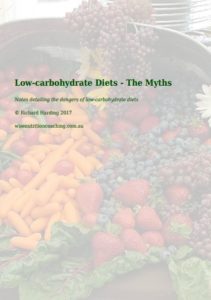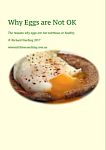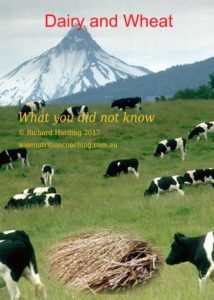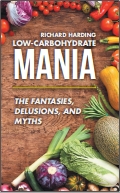Videos
Rip Esselstyn’s Plant Strong Legacy
Rip Esselstyn’s Plant Strong podcast discusses the making of “Plant Strong Legacy“.
Dr. Liz George, who helped a small dairy town in Pennsylvania, transition to a plant-strong lifestyle, shares her story. 12 years later, the impact on this community has endured.
Caldwell B. Esselstyn, Jr., MD on how to reverse heart disease part 1
February 2014
Caldwell B. Esselstyn, Jr., MD on how to reverse heart disease part 2
February 2014
Caldwell B. Esselstyn, Jr. MD, Treating the Cause to Prevent and Reverse Heart Disease
16 November 2012
Neal Barnard, MD | How Foods Affect Hormones
Physicians Committee for Responsible Medicine
19 March 2020
IMPORTANT: This video is about much more than female hormones. It is vitally important for males as well and has far reaching effects beyond endometriosis.
IMPORTANT: Neal describes a 2 step process over three weeks where he demonstrates how easy it is to transition to a no added oil, whole-food, plant-based diet by substituting foods in your current diet with permissible foods. It is not a long-term solution. However, at the end of the three weeks, you will have already experienced significant changes and realise that the process is not as hard as you initially thought.
REALLY IMPORTANT: Changes can be profound, especially if you are taking diabetic or blood pressure medications. Blood pressure and blood sugar can drop so dramatically you can place yourself at serious health risk, so the changes should be monitored under medical supervision.
If you are on “blood thinner” medications such as warfarin, advice is given to reduce leafy green vegetables – the foods that are vitally important to optimal health. This is another reason why medical supervision may be necessary. No added oil, WFPB diets can have a significant impact on thrombotic markers such as fibrinogn, PAI-1, PAI-1ag that indicates a reduction in the risk of thrombosis. See footnote for further details. 1 2 3
In the video, Neal tells the story of Katherine Lawrence who was an Air Force officer working as an aerospace engineer. In 2003, she was one of the first group of people in Iraq, building air bases.
Cheese was one of her favourite foods, so when she returned from Iraq she devoured large quantities of cheese and cheese dishes.
As a result she gained a substantial amount of weight and started getting pain in her abdomen that become much worse over time. A doctor performed a laparoscopy – the body is examined through a scope inserted into an incision below the belly button. This resulted in a diagnosis of endometriosis.
Her doctor stated that her only option was a hysterectomy – an operation that removes the uterus and in this case the ovaries and fallopian tubes.
Katherine and her family wanted to start a family but with the condition that Katherine was in this was an impossibility, so she agreed to the operation that was scheduled in six weeks time.
Before the operation, Katherine removed all animal products and started consuming a really low-fat diet in an attempt to control the severe pain that she was suffering. She started to feel much better. She had her procedure performed on the appointed day. The doctor opens her up and an hour later Katherine woke up in the recovery room. The doctor told Katherine,
Her mother was in the room. Her mother said, “She went vegan.” The doctor replied,
It was easier for the doctor to believe that a miracle cured Katherine than the more realistic fact that endometriosis is caused by an excess of estrogen. Take away the excess estrogen and it stops. A diet that is very high in fiber, very low in fat, causes estrogen hormones to reduce.
Listen to Neal’s video as he continues Katherine’s “miracle” story which has a much greater impact on her health and life.
Minimising estrogen activity not only benefits females but has a remarkable impact on the the health of males. 4 ~ 5 ~ 6 ~ 7 ~ 8 ~ 9 ~ 10 ~ 11
Neal’s speaks about Dr. Anthony (Tony) Sattilaro who in 1978 at the age of 48, was diagnosed with cancerous growths in his skull, right shoulder, prostate, backbone, sternum and genitals. At the time, he was the president of Methodist Hospital and was told that he had about one year to live.
Two months later Dr. Sattilaro’s father suddenly died. After attending his father’s funeral in New Jersey, he was driving back home to Philadelphia. Dr. Sattilaro picked up two young hitchhikers — Sean McLean and Bill Bochbracher — who were on their way to North Carolina. It is something that he would normally not do. “It was a spur of the moment decision. I guess I just needed somebody to talk to.” He told the hitchhikers that his father had just died and that he himself had been diagnosed with an aggressive cancer, non-treatable cancer.
Sean commented, “You do not have to die. Cancer is not all that hard to cure. You can do it.” Sean told him about a female doctor with very aggressive breast cancer who had done very well on the diet and reversed her cancer. Tony telephoned her and her husband answered the phone. He told Tony that she was very unwell and dying of her breast cancer. Tony responded, saying that he was told that she had been cured. Her husband responded that this was the case but she did not stick to it.
This was sufficient for Tony to give the diet a chance. After all, what did he have to lose. Tony visited the Philadelphia East-West Foundation where he learnt how to prepare macrobiotic meals which Sean insisted had cured many forms of cancer. Sean sent Tony a book, “A Macrobiotic Approach to Cancer,” which contained many testimonials from cancer patients.
The diet consists of approximately 50 percent cooked whole grains (brown rice, wheat, barley and millet), 25 percent locally grown vegetables, 15 percent beans and sea vegetables as well as fish, soup, condiments, fruit, seeds and nuts.
Tony thought the idea was “ludicrous” but with nothing to lose he attended macrobiotic cooking classes at the East-West Foundation where Denny Waxman was the director.
Tony adhered strictly to the diet and began eating his meals at Waxman’s house. Within two weeks, Tony’s extreme pain was completely gone and he stopped taking his pain medications. In September of 1979, 15 months after starting on the macrobiotic diet, a bone scan showed that Tony was completely free of cancer.
After ten years of being free of cancer, for what ever reason, Tony believed that he was cured and began eating his previously normal diet.
In the late 1980s his cancer returned and he died in 1989 at the age of 56 with the cause of death given as prostate cancer.
There is no need for a macrobiotic diet to be bland and tasteless. There are a number of different versions of a macrobiotic diet. Tasty plant-based, whole foods (seasoned with herbs and spices) without any added oils, dressing or salt is an even better option.
For some illnesses, there is only one opportunity to reverse the disease – you do not get a second chance.Fireside Chat with Dr. T. Colin Campbell and Dr. Caldwell Esselstyn
T. Colin Campbell Center for Nutrition Studies
5 July 2023
Heart to Healthy Heart – Dr. Caldwell Esselstyn
Plant Powered Metro New York
25 January 2023
Last updated on Tuesday 12 November 2024 at 10:40 by administrators
Footnotes
- Without vitamin K, (K from koagulation) blood coagulation is seriously impaired and uncontrolled bleeding occurs. Some research suggests that deficiency of vitamin K may contribute to osteoporosis and cause calcification of arteries.
Vitamin K1 is found most predominantly in brassicas (leavy green vegetables) as well as asparagus, raw carrots and tomato products. It is required for photosynthesis.
Vitamin K2 consists of a 10 subtypes. It is contained in animal foods with the notable exception of Natto (fermented soya beans). This is a very high source but is generally not consumed outside of Japan. Otherwise it is found in egg yolk, goose, chicken, hard cheese and pork.
Warfarin is an anticoagulant drug which is administed to reduce risk of blood clotting. Some drugs such as thalidomide and lenalidomide increase the risk of blood clotting.
Some foods are so high in vitamin K1 that medical advice is to avoid for those foods whilst on warfarin or alternatively keep the consumption of these foods consistent.
More recently developed anti-coagulants such as apixaban, dabigatran and rivaroxaban are not vitamin K antagonists.
- Sdringola, S. et al. (2003) Combined intense lifestyle and pharmacologic lipid treatment further reduce coronary events and myocardial perfusion abnormalities compared with usual-care cholesterol-lowering drugs in coronary artery disease. Journal of the American College of Cardiology. 41 (2), 263–272.
- Pieters, M. & Swanepoel, A. C. (2021) The effect of plant-based diets on thrombotic risk factors. Polish Archives of Internal Medicine. 131 (16123).
- Kuć, A. J. & Szymanek, W. P. (2023) Nutrition in the Prevention and Management of Endometriosis Symptoms – A Current Literature. Emergency Medical Service. 10 (2), 113–118.
- Barnard, N. D. et al. (2023) Nutrition in the prevention and treatment of endometriosis: A review. Frontiers in Nutrition. 101089891.
- Chantalat, E. et al. (2020) Estrogen receptors and endometriosis. International Journal of Molecular Sciences. 21 (8), 2815.
- Bagga, D. et al. (1995) Effects of a very low fat, high fiber diet on serum hormones and menstrual function implications for breast cancer prevention. Cancer. 76 (12), 2491–2496.
- Persky, V. W. et al. (1992) Hormone Levels in Vegetarian and Nonvegetarian Teenage Girls: Potential Implications for Breast Cancer Risk. Cancer Research. 523 (1), 7.
- Schaefer, E. J. et al. (1995) Changes in plasma lipoprotein concentrations and composition in response to a low-fat, high-fiber diet are associated with changes in serum estrogen concentrations in premenopausal women. Metabolism. 44 (6), 749–756.
- Kaaks, R. et al. (2005) Serum Sex Steroids in Premenopausal Women and Breast Cancer Risk Within the European Prospective Investigation into Cancer and Nutrition (EPIC). JNCI: Journal of the National Cancer Institute. 97 (10), 755–765.
- Kaaks, R. et al. (2005) Postmenopausal serum androgens, oestrogens and breast cancer risk: the European prospective investigation into cancer and nutrition. Endocrine-Related Cancer. 12 (4), 1071–1082.





